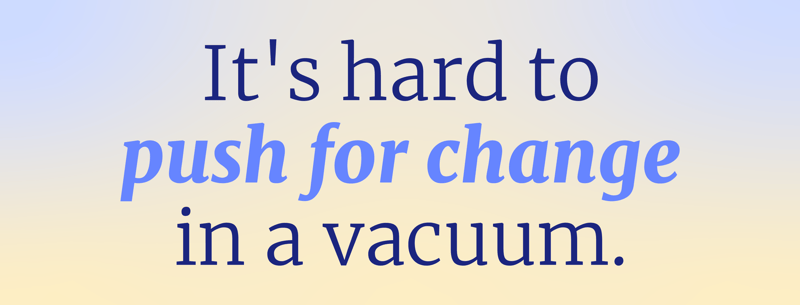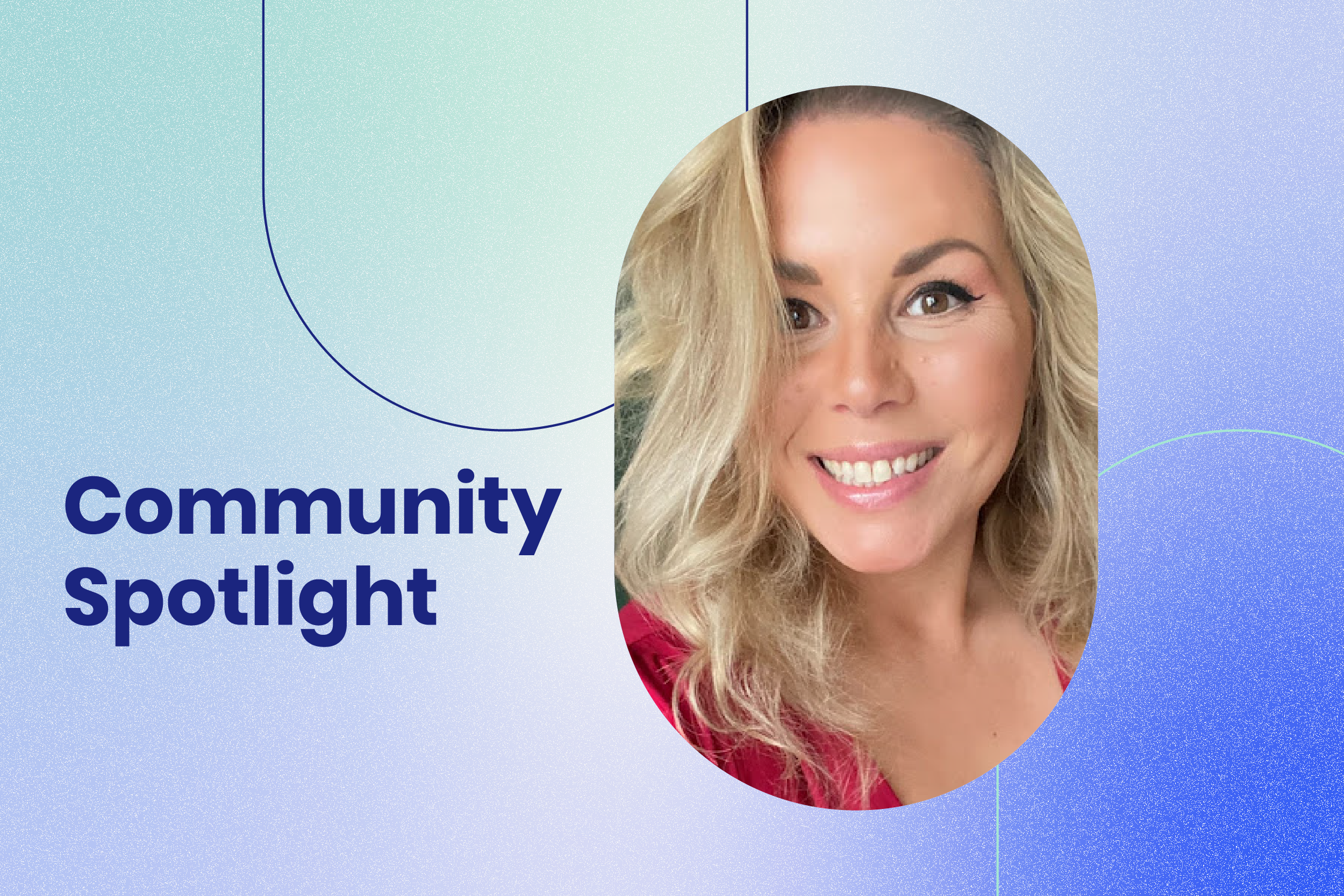This is a guest post by The Mom Project Community member Becky Gandillon. If you are a Community member with a unique story to share let us know.
My daughters, Edith (age 5) and Louise (age 2) love picking out books to read before bedtime every night. Edith’s current favorite is “Margaret and the Moon: How Margaret Hamilton Saved the First Lunar Landing.” The story covers Margaret’s life in a way that is approachable for young kids, starting when she was a girl that loved math and asked lots of questions, up until when she was the Director of Software Engineering (a term that she coined!) for NASA during the Apollo Program – all before she turned 33 and while raising her 4-year-old daughter. Her story is relatable and aspirational, engaging and inspiring.
Margaret thrived in the notoriously male-dominated culture of NASA in the 1960s. Modern women, myself included, are still struggling with making our way through the male-dominated industries that permeate our world.
I have an advanced degree in engineering, worked for the Department of Veterans Affairs for 8 years and have now been a technical consultant for over 2 years. At the VA, I was one of two women among the multitude of biomedical engineers and technicians in our three-state region.
👉 Recent data shows that about 13% of working engineers are women, and in 2020, about 21% of technical consultants were women.
Margaret’s struggles in the 1960s are still mirrored in the world of today, driving home the point that we can’t just wait for diversity to happen in these male-dominated industries. We must drive the change ourselves. But what does that look like? Where do we even start? Here are a few things that work for me.
Embrace your style
Whether it was in engineering school, at the VA or in consulting, I regularly found myself wanting to emulate the white male leaders that surrounded me. This wasn’t always a bad thing – certainly there are positive leadership traits that I want to learn from and adopt. But I am not, will never be and should not be expected to behave like a middle-aged white male.
💡 If we yearn for our industries to be accepting and supportive of diversity, we can’t hide our true selves in order to fit in.
We can’t sacrifice our individual differences in order to climb the ladder, even if we perceive that the reward will be that we will attain a position of power and then will be able to make impactful change and advocate for diversity. That hinders our efforts and proves the effectiveness of the uniformity that we aim to change.
Instead, we need to be the positive example of what diversity can offer to a team, company, or industry. We each have a unique background and that is what allows us to excel in ways that no one else can. Be confident enough to know when being different is the right thing. The only way that we can actively demonstrate that uniformity doesn’t yield better outcomes is by illustrating the effectiveness of diversity.
An important side-effect of embracing your own style is that if you’re the only leader behaving in a certain way, you are much more likely to stand out and be remembered by your leadership, peers, or a client. Make a name for yourself and enjoy being different.
Scale it down
Many women in male-dominated industries can attest to the fact that we are often asked to be the one to take notes in a meeting, plan a social or corporate gathering or place the lunch order. Figuring out how to respond to these requests can become maddening. If I say yes, I’m just playing into their stereotypes. If I say no, I might be viewed as “difficult”.
I’ve found that when these situations arise and I reply to them by suggesting a rotation of the responsibility in question, I’m almost always met with understanding and agreement. Through discussion and shared responsibility, a situation that may have previously been personally frustrating becomes an even playing field. Each member of the group gets to demonstrate their unique approach to the task. It’s a low-risk way to demonstrate the power of diversity to positively impact at one of the smallest scales.
💡 One option to avoid being the sole person responsible for stereotypical tasks such as taking the meeting notes: Suggest a rotation.
One step up on this scale could be advocating for diversity within a single committee, team or project. It may not be within your influence to impact diversity for your entire company, but you can use your voice where you are now. Diversity is important at every scale. We are all human, and we all have blind spots – they could be technical, emotional or strategic. It’s only by embracing diversity and collaboration that we can eliminate overall blind spots and not miss things as a group.
Break the cycle
I’ll admit – I’m not one of those moms that tells their kids to “leave a room better than you found it.” To be honest, I’m happy if they don’t leave it looking like a tornado. But we do need to make sure that we’re leaving our teams, our companies and our industries better than we found them. Have you heard something like this before from a female leader? “When I was your age, I didn’t have a fancy title, and I was making 10% less than you were.”
If you ever find yourself in a position where you can impact the life of any woman in a male-dominated industry, use your power to bring progress. Make the situation better than the ones you experienced. This includes driving parent-friendly policies within your sphere of influence. Studies regularly show that women and minorities are more responsible for caring for children or elderly parents and this can negatively impact their ability to work normal hours or schedules. By encouraging parent-friendly policies, we make the workplace more welcoming to candidates of all backgrounds.
💡 What could this look like?
👉 It could be as simple as discussing parental leave policies while you’re interviewing for a position, even if you don’t plan on having children.
👉 Negotiate a different parental leave policy than what the company typically offers if it’s important to you.
👉 Ask about health insurance options and how the company supports families with young children or dependent parents.
👉 Schedule meetings at times that don’t conflict with kids’ bedtimes (or sports games). Better yet, before you schedule a meeting, check if anyone has family conflicts.
👉 Rather than accommodating the “most important” attendee, accommodate the attendee with the most at-home responsibilities.
Little things like this add up to big change once they catch on within an organization.
Find your network
It’s hard to push for change in a vacuum. I constantly question myself and whether I’m doing too much or too little. That’s why having a network that’s able to support you is important. Your network doesn’t need to be a group that works for the same company, or even in the same industry. They just need to care about you enough to tell you the truth and to push you to do things that you aren’t brave enough to do on your own. My network has driven me to find a new company when they knew mine wasn’t supporting my fullest potential. They’ve bought me baked goods when I had a particularly rough day. They’ve encouraged me to apply to positions that I didn’t think I was capable of handling.

But more important than benefiting from your network is how we benefit those in our network. That’s how we make our push for diversity stronger than any one individual effort. Grow your network through mentoring or sponsoring women that need a helping hand, either in breaking into a male-dominated industry or surviving the types of situations that make women drop out of these industries at a higher rate than men.
And most importantly, be a role model. My daughter is in awe of Margaret Hamilton and I am no Margaret Hamilton. But I am a woman successfully making my way through several male-dominated industries and I’m really enjoying it. Young girls and teenagers and college students need to see positive examples of all types to see themselves in those pictures of success.
Q&A with Becky:
- How did you find The Mom Project? I read an article about The Mom Project early on in the pandemic, and really admired the concept, so I looked up the site and read up on it.
- What motivated you to sign up? At my previous company, I wasn't getting the opportunities that I wanted or the time with my family that I needed, and the ability to have companies and jobs pre-screened for being family friendly was incredibly appealing.
- What has been your favorite aspect, tool or part of The Mom Project? I love that anyone can fill out a profile and get jobs automatically sent to their inbox that they qualify for, and that they know will be at companies with the right values. I still refer a lot of women to use the service.
- Do you currently use the resources from The Mom Project? Now that I've found a company that is a great fit for me, I still use resources from The Mom Project. I love the virtual events offered - especially the Master Classes. They're always relevant and helpful.
Becky Gandillon is the Manager of Data & Analytics for Centric Consulting in St. Louis, and she has expertise in data storytelling, data strategy and visualization. She is a big Disney nerd that spends some of her free time analyzing and predicting crowd patterns at Disney World. She and her husband love travelling with their two daughters, and are looking forward to being able to go on adventures again soon.



